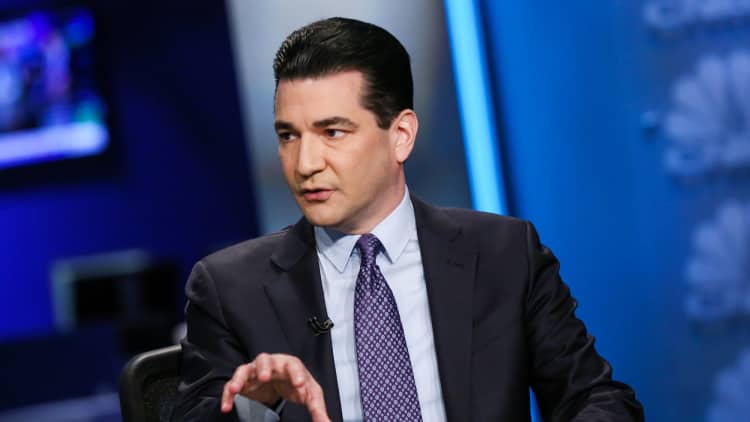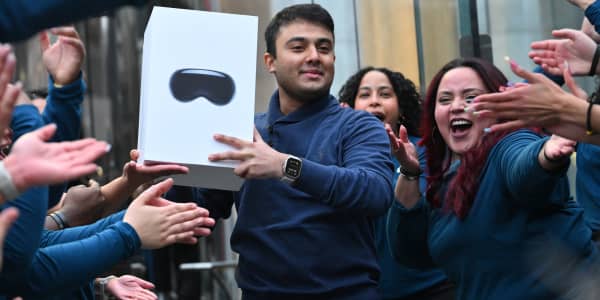Kinsa believes the only way to curb a pandemic is to know where it is happening in real time.
The San Francisco-based health technology company was launched in 2012 to help stop the spread of infectious illness — in particular, the seasonal flu — through earlier detection and earlier response.
Their means? An internet-connected smart thermometer, paired to a mobile app, which aggregates consumers' temperature and symptoms data This real-time data enables Kinsa to track where in the U.S. the illnesses start, so the health industry can be better prepared to mobilize the right resources in the right places at the right times.
Now, Kinsa says, the data gathered from its smart thermometer could help to predict future COVID-19 outbreaks by relying on the data it has collected for years to determine what the U.S. can expect from a normal cold and flu season. The model takes what is currently being seen — a spike in illness — and subtracts the "norm." What they're left with is an anomaly, which can be correlated to coronavirus.

"Our system is not saying, 'This is COVID'; it's saying, 'This outbreak isn't normal. Go send the test kits in,'" says Kinsa founder and CEO Inder Singh.
On Tuesday the company announced it is providing their illness insights and real-time fever information for free to accredited academic institutions, public health entities and researchers who qualify.
More from Tech Drivers:
Drinking, social distancing and a booze-delivery-app boom
First cell treatment to fight the coronavirus awaits FDA approval for clinical trial
How singles are meeting up on dating apps like Tinder, Bumble during coronavirus pandemic
Beating the CDC lag time
The Centers for Disease Control and Prevention has been keeping tabs on illnesses, such as the flu, for decades. But the CDC relies on people to visit health-care departments, which then make diagnoses and report those diagnoses. That creates a lag time that Kinsa doesn't have. Kinsa collects its health data in real time, therefore pinpointing hot spots for the flu before CDC reports become available, according to a 2020 study in Health Informatics Journal.
Singh says Kinsa's real-time data collection is vital during a pandemic, where every day counts.
"Our mission is to curb the spread of infectious illness through early detection. A thermometer is a means to an end," says Singh. "If you want to know where disease is spreading, you have to know the symptoms. The best way was to piggyback off a tool [people] already had."
A trove of info to mine
Kinsa currently has thermometers in more than a million households. More than 2 million users nationwide record about 150,000 temperature readings per day. Thermometers cost about $40 for a standard model and about $70 for an ear model. The thermometers connect to a smartphone via Bluetooth, uploading location, temperatures and user-inputted symptoms to Kinsa's database. The result is a trove of information for the company to then mine for patterns.
"How do you curb the next pandemic if you don't know where it's starting? You have to know in real time," Singh says. "You have to know severity, how long-lasting is it, how many days does it take to get better, what are the worst symptoms. All of that boils down to accurate geolocated data."
This map of the United States indicates the trend in illnesses from March 12 to March 24, 2020, based on temperature readings aggregated from the Kinsa app.
Singh is quick to point out that his company's predictions have not been peer reviewed and thus his team is working with educated guesses, not certainties. However, when it comes to identifying infectious disease outbreaks, more information is always better.
"I think the more information we have that can raise potential flags for the public health system to respond to, the better off we'll be," says Alain Labrique, an infectious disease epidemiologist at Johns Hopkins Bloomberg School of Public Health who is not affiliated with Kinsa. "Given the severity of the consequences of this infection and the spread of this pandemic, it's important to err on the side of caution and try to investigate clusters of fevers."
The model Kinsa uses to predict coronavirus outbreaks tracks the proportion of the population that is susceptible, and infected, respectively over time. It then looks at the corresponding rate at which individuals transition from being susceptible to becoming infected, and the rate at which they recover or are removed from the infected state.
This class of model is called a compartmental model, and it is one that's been around, in one form or another, since the late 1800s, says Benjamin Dalziel, a population biologist at Oregon State University. Dalziel works with Kinsa on its modeling and has received funding from the company. This process has transformed from mapping chemical reactions in the 19th century to epidemiological modeling with the modern computer today. The model is so straightforward, it can be boiled down into less than 50 lines of code.
Using that model, Kinsa says it can predict a flu outbreak 20 weeks in advance and on a city-by-city basis, which could be a game changer in the fight against coronavirus.
"We have limited tests; we have limited ICU beds; we have limited ventilators. The point here is that we need to triage; we need to allocate resources where they're most needed," Singh says. "If you see fever clusters rising, that's where you send test kits."
Kinsa isn't the only one in the COVID-19 outbreak predicting race. The U.S. government is currently in discussions with Facebook, Google and other tech companies about the possibility of using location and movement data from Americans' smartphones to combat coronavirus.
Scientists have been mining social media data for years to reveal insights about public health. There are issues with that. "What was tripping up the model in some years was 'Bieber fever' [in Tweets]," Labrique says. "At least with a thermometer, you can distinguish between real and Bieber fever."
As people around the country stay home and practice social distancing, Kinsa is just another tool health-care officials can use in the fight to minimize an outbreak.
"Health interventions are critical to flattening the curve, and those targeted interventions require that we know where the hot spots of transmission are in a timely manner," Dalziel says. "That's a huge value that I see in what Kinsa is doing."





